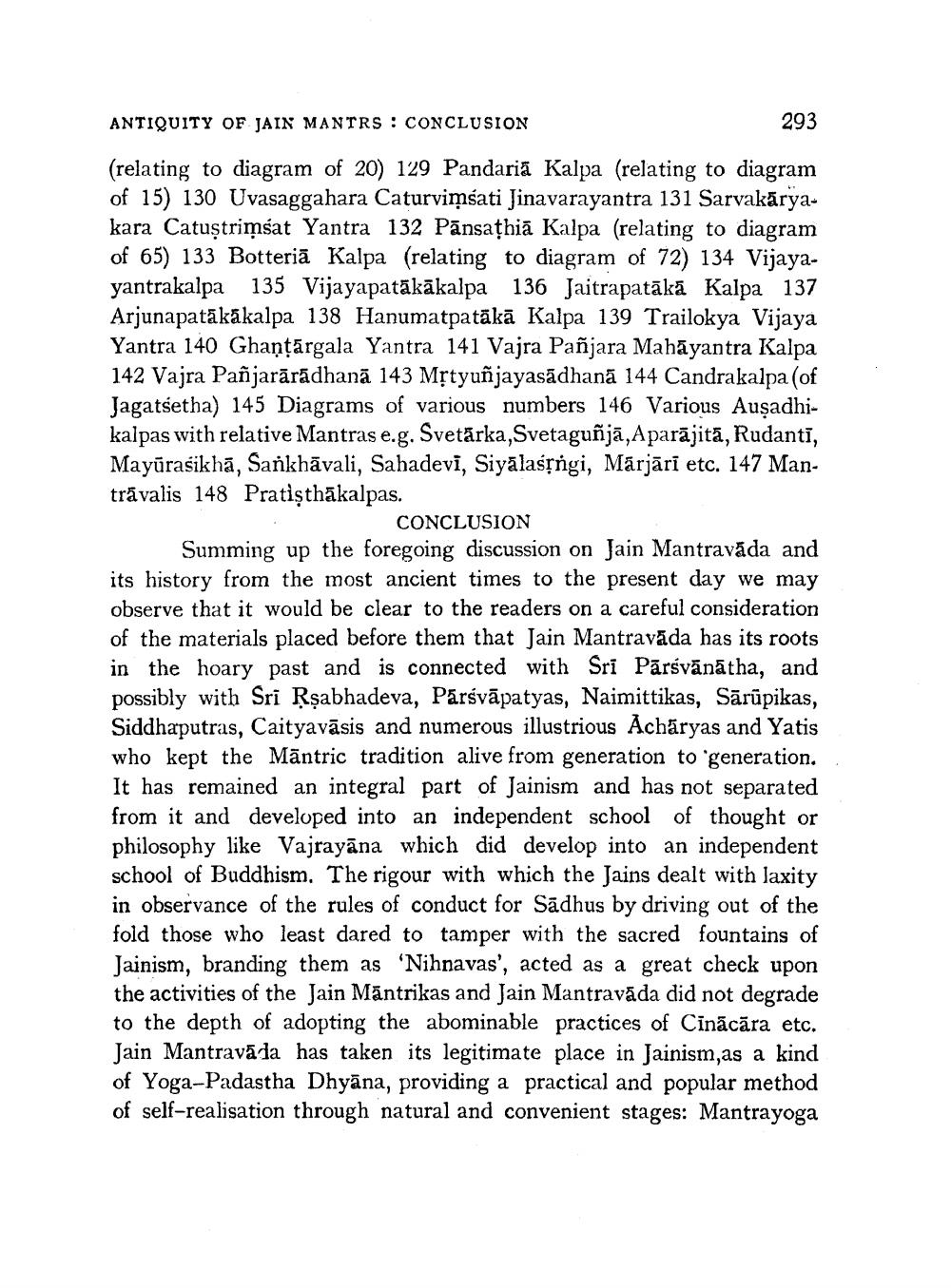________________
ANTIQUITY OF JAIN MANTRS : CONCLUSION
293
(relating to diagram of 20) 129 Pandaria Kalpa (relating to diagram of 15) 130 Uvasaggahara Caturviņšati Jinavarayantra 131 Sarvakāryakara Catuștrimsat Yantra 132 Pānsațhiā Kalpa (relating to diagram of 65) 133 Botteriā Kalpa (relating to diagram of 72) 134 Vijayayantrakalpa 135 Vijayapatākākalpa 136 Jaitrapatāká Kalpa 137 Arjunapatākākalpa 138 Hanumatpatākā Kalpa 139 Trailokya Vijaya Yantra 140 Ghanţārgala Yantra 141 Vajra Pañjara Mahāyantra Kalpa 142 Vajra Pañjarārādhanā 143 Mộtyuñjayasādhanā 144 Candrakalpa (of Jagatsetha) 145 Diagrams of various numbers 146 Various Auşadhikalpas with relative Mantras e.g. Svetārka, Svetaguñjā, Aparājitā, Rudantī, Mayūrasikhā, Sankhāvali, Sahadevi, Siyālasșngi, Märjārī etc. 147 Mantrāvalis 148 Pratișthākalpas.
CONCLUSION Summing up the foregoing discussion on Jain Mantravāda and its history from the most ancient times to the present day we may observe that it would be clear to the readers on a careful consideration of the materials placed before them that Jain Mantravāda has its roots in the hoary past and is connected with Sri Pārsvānātha, and possibly with Sri Rşabhadeva, Pārsvāpatyas, Naimittikas, Sārūpikas, Siddhaputras, Caityavāsis and numerous illustrious Acharyas and Yatis who kept the Māntric tradition alive from generation to generation It has remained an integral part of Jainism and has not separated from it and developed into an independent school of thought or philosophy like Vajrayāna which did develop into an independent school of Buddhism. The rigour with which the Jains dealt with laxity in observance of the rules of conduct for Sādhus by driving out of the fold those who least dared to tamper with the sacred fountains of Jainism, branding them as 'Nihnavas', acted as a great check upon the activities of the Jain Mantrikas and Jain Mantravāda did not degrade to the depth of adopting the abominable practices of Cīnācāra etc. Jain Mantravā da has taken its legitimate place in Jainism, as a kind of Yoga-Padastha Dhyāna, providing a practical and popular method of self-realisation through natural and convenient stages: Mantrayoga




